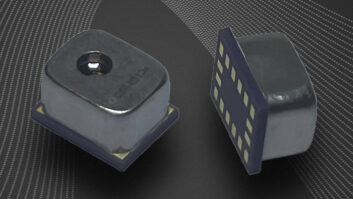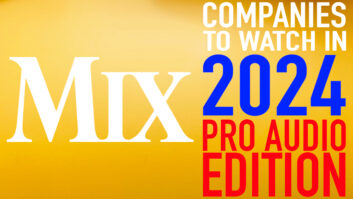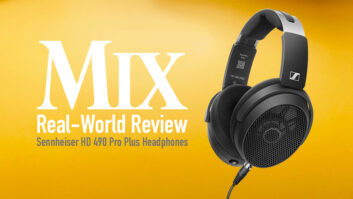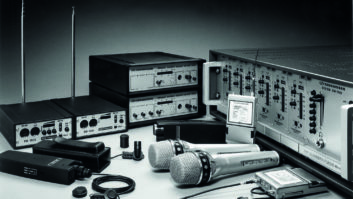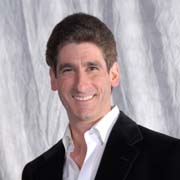
Sennheiser Electronic Corporation in New Lyme, Conn., recently issued the following statement with regard to the FCC’s November 4 “white spaces” ruling: “Following the recent ruling by the Federal Communications Commission (FCC) regarding proposed ‘white space’ consumer devices, Sennheiser is taking steps to assure users of wireless audio products that the sky will not fall after February 17, 2009 (the deadline for the digital TV conversion). The anticipation of these changes has caused a great deal of anxiety for many customers.
“However, not only have a variety of safeguards been put in place by the FCC ruling to help prevent interference between the unlicensed consumer devices and RF wireless microphones, but Sennheiser is launching enhanced customer service and support programs. As a first level, Sennheiser is offering a free initial consultation service via phone to answer questions from users or dealers and to address each individual situation. Anyone wishing to receive a call from an RF specialist regarding the operation of any wireless mic or monitoring equipment after February 17, 2009 may sign up on the company’s dedicated Website: www.sennheiserusa.com/spectrumreallocation. Higher level services will include on-site spectrum analysis, frequency coordination, as well as service contracts.
“The new FCC rules include several safeguards to avoid interference to wireless microphones. Most importantly, licensed operation of wireless mics takes precedence over TV Band Devices (TVBDs), formerly referred to as white space devices (WSD). TVBDs must coordinate around active licensed wireless mic systems.
“TVBDs must include the spectrum sensing capability to listen to the airwaves and detect wireless microphones (in addition to TV stations). Until they can demonstrate through ‘proof of performance’ that they can reliably sense wireless mics and avoid causing interference through this method alone, they must also use a geolocation database system. The database would include a table of registered broadcast license assignments. It will also include a list of protected areas that use wireless microphones such as entertainment venues and sporting events. TVBDs must first access the database to obtain a list of permitted channels in the area before operating. A TVBD that lacks this capability can operate only under the direct control of a TVBD that has it.
“The FCC ruling accommodates for at least two channels available for wireless mics. This ensures that a minimum of sixteen wireless mic systems—eight in each TV channel —may be used simultaneously in any venue. Equipment with high linearity (extreme suppression of harmonic distortion known as intermodulation), such as Sennheiser’s 3000 and 5000 Series products, will support at least 20 systems, or 10 in each TV channel. Specific areas protected by the FCC ruling will enable the operation of many more channels.
“Multistage and studio properties may also effectively increase the number of systems in use through physical distance and transmitter output power management. Techniques such as shifted coordinated frequency sets, zone isolation (natural or enhanced shielding between rooms), directional antennas and filtered distribution systems, as well as time multiplexing (using systems in different rooms at different times) may also be used.
Sennheiser USA’s Joe Ciaudelli
“Noted Joe Ciaudelli (pictured), Sennheiser’s ‘white space’ spokesperson: ‘From the start, Sennheiser assessed, communicated and educated. We assessed the issues and commented on the proposed solutions based on proven technologies, rather than the often speculative technologies endorsed by the white space lobby. We communicated with the FCC and elected officials to help them understand the proven benefit of wireless audio devices to maintain the high standard of TV, radio, film, and live entertainment that the entire population has come to expect. We educated our customers, helping them distinguish between the facts and the rhetoric.’
“TVBDs categorized as Fixed devices are allowed to operate with effective radiating power up to 4W on channels 2-51, with the exceptions of channels 3, 4, and 37. Those classed as Personal/Portable are restricted to channels 21-51, and are also not allowed in channel 37. In addition, in thirteen major markets where certain channels between 14 and 20 are used for land mobile (municipal and public safety) operations, two channels between 21 and 51 will be reserved and available for wireless microphones. These will be the first open (non-TV) channels above and below channel 37.
“Further, the unlicensed consumer devices are limited to 100mW operating power or 40 mW if operating in a channel adjacent to an active station. This moderate power will reduce their range and therefore the possibility to cause interference.
“Ciaudelli adds, ‘Although the introduction of TVBDs will pose new challenges for wireless mic users, multichannel operation can be made reliable through the use of quality equipment operated using best practices. To assist customers with the latter, we encourage them to visit our Website, call our help desk hotline and ideally attend one of our RF Sound Academy seminars.'”
For more information, visit www.sennheiserusa.com.


